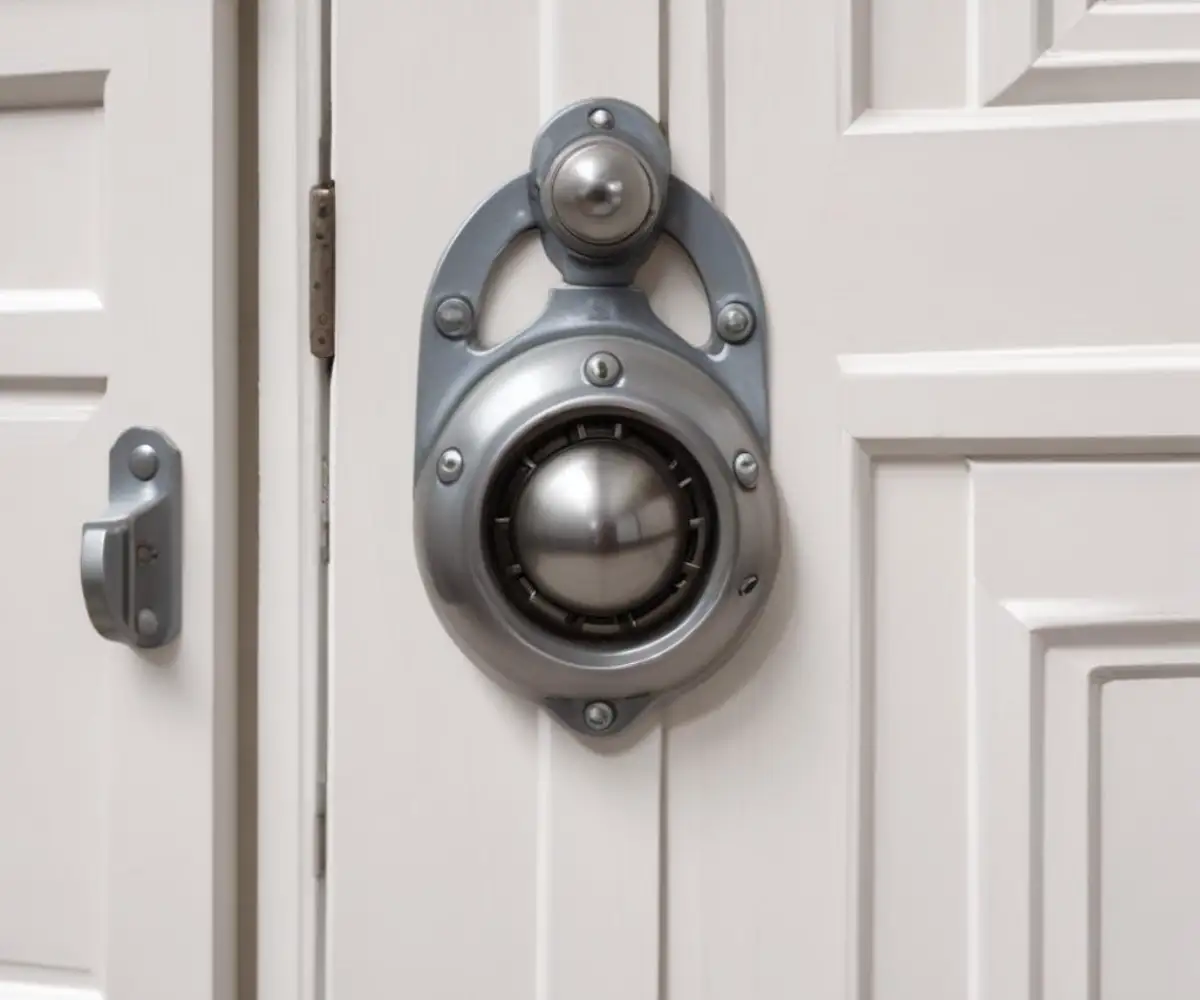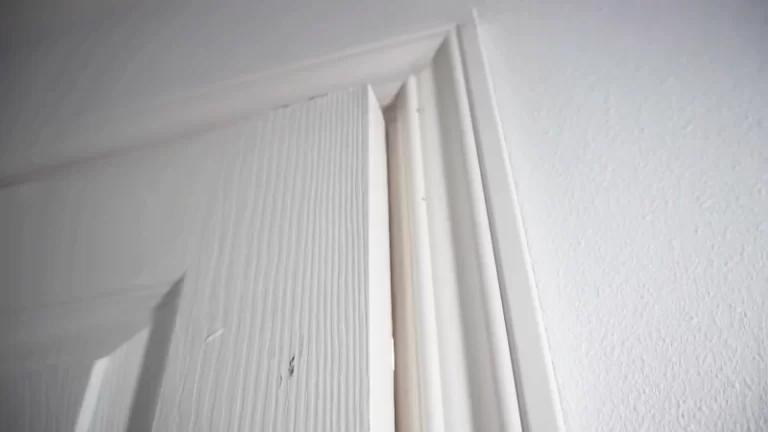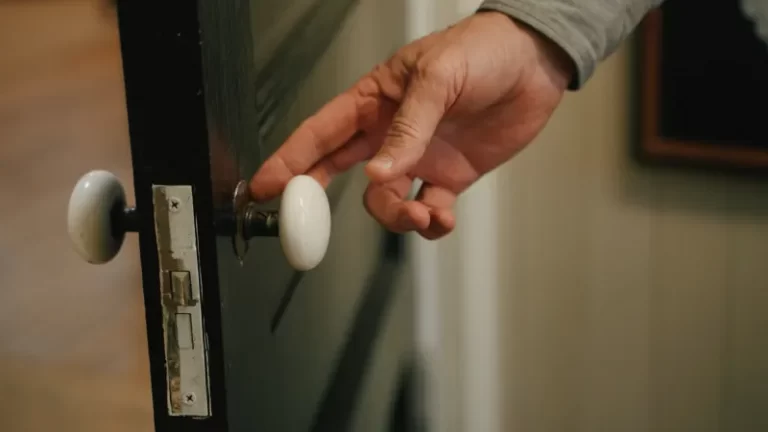Door Keeps Popping Open? Your Ultimate Ball Bearing Spring Fix
There’s nothing more frustrating than a door that refuses to do its one job: stay closed. You shut it, walk away, and a moment later, it mysteriously creeps open again. This common household annoyance often points to a small, overlooked piece of hardware at the very top of your door—the top of door ball bearing spring catch.
This little device, also known as a ball catch, is essential for doors that don’t have a traditional turning latch, like many closet doors, pantry doors, or French doors. It uses a spring-loaded ball to create tension against a strike plate on the door frame, holding the door securely in place. When it fails, your door is left with no way to stay shut.
But don’t call a handyman just yet. Fixing or replacing this component is one of the easiest and most satisfying DIY repairs you can tackle. In this comprehensive guide, we’ll walk you through everything from diagnosing the problem to performing the perfect fix, ensuring your doors stay exactly where you want them.
You'll Learn About
Why Your Ball Bearing Catch Fails: Uncovering the Common Culprits
Before you can fix the problem, you need to understand what caused it. A ball catch is a simple mechanical device, but several factors can lead to its failure. Pinpointing the cause will help you apply the right solution and prevent the issue from recurring.
Most often, the failure isn’t sudden. It’s a gradual process resulting from everyday wear and tear or environmental changes in your home.
1. Simple Wear and Tear
This is the most frequent cause of failure. The internal spring that pushes the ball upward can lose its tension after thousands of opening and closing cycles. When the spring weakens, it no longer provides enough force to hold the door against the frame, allowing it to pop open with the slightest draft or vibration.
Similarly, the metal ball bearing itself can wear down or develop flat spots over time. This reduces its ability to roll smoothly into the strike plate, causing it to catch or fail to engage properly.
2. Misalignment Between Door and Frame
Your house is constantly, subtly shifting and settling. These movements can cause the door and its frame to fall out of alignment. If the ball in the door is no longer perfectly lined up with the strike plate’s hole in the frame, it won’t engage correctly.
This misalignment can prevent the ball from seating fully in the strike plate, resulting in a weak hold. A door that’s hard to close or makes a loud grinding sound is a classic sign of this issue.
3. Debris, Dust, and Grime
The small chamber housing the ball and spring is a magnet for dust, wood shavings, and other debris. Over time, this gunk can build up and physically obstruct the ball’s movement. It can prevent the ball from retracting when the door closes or from extending fully when it’s in place.
A lack of lubrication exacerbates this problem. Without it, friction increases, making the mechanism stiff and prone to jamming. Sometimes, a simple cleaning is all that’s needed to restore function.
4. Incorrect Tension Settings
Many ball catch models are adjustable, allowing you to control how much force is required to open and close the door. If the tension is set too low, the door will pop open easily. If it’s set too high, the door will be difficult to close and can cause unnecessary wear on the mechanism.
Over time, the vibrations from using the door can cause the adjustment mechanism to loosen, reducing the tension. This is often the easiest problem to fix, requiring just a few turns of a screwdriver.
Is It Really the Ball Catch? A Quick Diagnostic Checklist
Before you start disassembling anything, let’s make sure the ball catch is the true source of your door troubles. Use this simple checklist to diagnose the issue with confidence.
- Listen Closely: Open and close the door slowly. A functioning ball catch makes a distinct, clean “click” as the ball seats into the strike plate. If you hear a grinding noise, a dull thud, or nothing at all, the catch is likely the problem.
- Visual Inspection: Stand on a step stool and look at the top of the door. Can you see the ball bearing? Is it stuck in the down position? Look at the strike plate on the frame—is the hole clogged with debris or paint?
- The Push Test: Close the door fully. Now, give it a gentle push. If it pops open with minimal effort, the spring tension is almost certainly too low or has failed completely.
- Rule Out Other Hardware: This applies mainly to doors that also have a standard doorknob latch. If your main latch is engaging properly with its strike plate, the issue is unlikely to be the ball catch. The ball catch is primarily for doors without a turning handle and latch.
Once you’ve confirmed the ball catch is the problem, it’s time to gather your tools and get to work.
Tools and Materials for a Successful Fix
The good news is that you likely already have most of the tools you’ll need for this job. It’s a simple repair that doesn’t require specialized equipment. Here’s your list:
- Screwdrivers: You’ll need both a flathead and a Phillips head screwdriver.
- Pliers: A pair of needle-nose pliers can be helpful for removing debris.
- Cleaning Supplies: A clean cloth, cotton swabs, and a vacuum with a crevice tool.
- Lubricant: A silicone spray or a dry graphite lubricant is ideal. Avoid oil-based lubricants like WD-40, as they can attract more dust and gum up the mechanism over time.
- New Ball Catch Unit (optional): If your current one is broken, have a replacement ready. They are inexpensive and available at any hardware store.
- Wood Filler/Toothpicks and Wood Glue (optional): For fixing stripped screw holes.
The Step-by-Step Guide to Your Top of Door Ball Bearing Spring Fix
We’ll start with the simplest fixes first and move on to a full replacement. In many cases, you can solve the problem in just a few minutes without having to remove any hardware.
Step 1: The Easiest Fix – A Thorough Cleaning and Lubrication
Often, years of accumulated dust and grime are all that stand between you and a perfectly functioning door. This should always be your first step.
First, use a vacuum cleaner with a brush or crevice attachment to remove all the loose dust and debris from the ball catch mechanism on the door and the strike plate on the frame. Then, use a clean cloth or cotton swab, perhaps with a little isopropyl alcohol, to wipe down the ball and the inside of the housing. Dig out any stubborn grime with a toothpick or needle-nose pliers.
Once it’s clean, apply a small amount of your chosen lubricant. A quick spray of silicone or a puff of graphite is all you need. Manually push the ball up and down a few times to work the lubricant into the spring mechanism. Now, test the door. You might be surprised that this simple act solves the problem entirely.
Step 2: Adjusting the Spring Tension
If cleaning didn’t work, the next step is to adjust the tension. Most ball catches consist of a threaded cylinder. Tightening this cylinder compresses the spring inside, increasing the force on the ball and making the door harder to open. Loosening it has the opposite effect.
Look for two small notches on the outer ring of the ball catch’s housing. Insert the tip of a flathead screwdriver into one of these notches and use the edge of the opening as leverage. Turn the cylinder clockwise to increase the tension. Start with a quarter-turn, then test the door. It should require a bit more force to pull open.
Continue making small, quarter-turn adjustments until the door holds firmly but can still be opened without excessive force. Finding this balance is key. If you overtighten it, you risk damaging the door or the mechanism itself. A properly adjusted door makes a confident clicking sound when it closes.

Step 3: Correcting Misalignment
If the tension is good but the door still won’t catch, you likely have an alignment problem. Close the door very slowly and get eye-level with the catch. Watch to see if the ball is hitting the center of the strike plate hole. Often, it may be hitting the edge of the plate instead of rolling smoothly into the depression.
To fix this, you may need to adjust the strike plate on the door frame. Loosen the screws holding the strike plate in place. You should have a little bit of play to move it side-to-side or up and down. Reposition it so it aligns perfectly with the ball and then retighten the screws.
If the original screw holes don’t allow for proper alignment, you may need to move the plate slightly. In this case, it’s best to fill the old screw holes with wood filler or the classic trick of a glue-coated toothpick. Let it dry, then drill new pilot holes for your screws in the correct position.
Step 4: When to Call It – A Full Replacement
If you’ve cleaned, lubricated, and adjusted the catch with no success, or if you can see visible damage like a cracked housing or a missing ball, it’s time for a replacement. This process is very straightforward.
First, you need to remove the old unit. The entire ball catch assembly is typically press-fitted or threaded into a hole drilled in the top of the door. If it’s threaded, you can simply unscrew it using the same method for adjusting the tension, continuing to turn it counter-clockwise until it comes out. If it’s a press-fit model, you may need to gently pry it out with a flathead screwdriver.
Take the old unit to the hardware store to ensure you buy an identical replacement in size and style. To install the new one, simply screw or press it into the hole. Set the initial tension to a medium level. Install the new strike plate in the same position as the old one, and then perform the final tension adjustments as described in Step 2.
Troubleshooting Common Ball Catch Scenarios
Sometimes the symptoms can be confusing. This table breaks down common problems and their most likely solutions to help you get straight to the fix.
| Symptom | Possible Cause | Primary Solution |
|---|---|---|
| Door pops open with the slightest touch or draft. | Spring tension is too low or the spring is worn out. | Turn the housing clockwise to increase tension. If that fails, replace the unit. |
| A loud grinding or scraping sound when closing the door. | Misalignment between the ball and the strike plate. | Loosen the strike plate screws and reposition it until the ball enters the hole cleanly. |
| The ball is stuck down inside the housing. | Debris is jamming the mechanism or the spring is broken. | Clean the mechanism thoroughly with a vacuum and cloth. If the ball is still stuck, the spring has failed and the unit needs replacement. |
| The door is very difficult to close and requires a hard push. | The spring tension is set too high. | Turn the housing counter-clockwise to decrease the tension. Adjust in small increments until the force feels right. |
| The screws on the strike plate are stripped and won’t tighten. | The wood fibers in the door frame are damaged. | Remove the screws, fill the holes with wood glue and toothpicks or wood filler, let it dry, and then re-drill the pilot holes. |
Proactive Maintenance: Keeping Your Doors Secure for Years to Come
Once you’ve fixed your ball catch, a little preventative maintenance can keep it working smoothly for the long haul. You don’t want to be dealing with the same frustrating issue again in a few months.
About once a year, take a moment to clean and lubricate your ball catches. A quick vacuum and a spray of silicone lubricant is all it takes. While you’re at it, check that the screws on the strike plate are still tight. These simple actions can dramatically extend the life of the hardware.
A well-aligned door is also crucial for your home’s overall efficiency. Just as making the right choice between fiberglass vs cellulose insulation impacts your energy bills, ensuring your doors close properly prevents drafts and helps maintain a stable indoor temperature.
Sometimes, alignment issues can be an early warning sign of your house settling, a natural process that can occasionally lead to problems in other areas, such as hairline cracks in tile floors. In those situations, understanding how to protect your flooring with the best crack isolation membrane can save you from much costlier repairs down the road.
Finally, dealing with unwanted noises is a common theme in home maintenance. While a noisy ball catch is a mechanical issue, it’s part of a larger quest for a quiet and peaceful home. That same problem-solving mindset can be applied elsewhere, whether you’re trying to figure out how to muffle TV noise from a family room or silencing a squeaky hinge.
A Simple Fix for a Satisfying Result
The frustration of a door that won’t stay closed is disproportionate to the simplicity of its solution. A faulty top of door ball bearing spring catch is a minor issue, but it disrupts the basic function and peace of your home. By following the steps outlined in this guide, you can quickly diagnose and solve the problem yourself.
From a simple cleaning to a full replacement, this is a DIY task that is well within the reach of any homeowner. Taking a few moments to understand and fix this small piece of hardware not only restores your door’s function but also empowers you with the knowledge and confidence to tackle other small home repairs. So grab your screwdriver, and in less than 15 minutes, you can enjoy the satisfying click of a perfectly closed door.


![Storm Door Handle Hits Door Knob [3 Easy Solutions]](https://fixitinthehome.com/wp-content/uploads/2023/02/Storm-Door-Handle-Hits-Door-Knob-768x432.webp)
